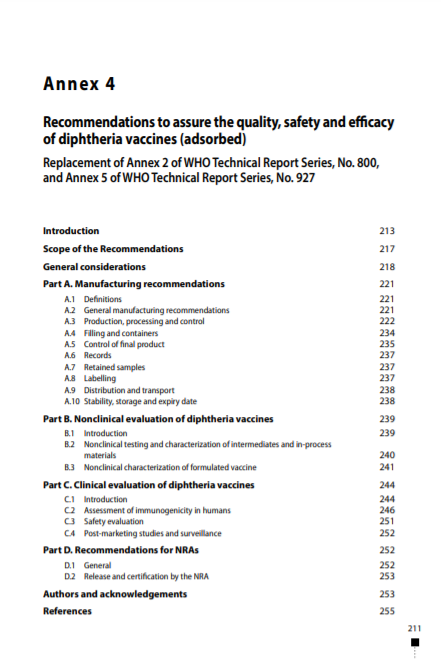Recommendations to assure the quality, safety and efficacy of diphtheria vaccines (adsorbed), Annex 4, TRS No 980
Replacement of Annex 2 of WHO TRS No. 800, and Annex 5 of WHO TRS No. 927

Overview
Diphtheria toxoid, produced by the chemical detoxification of diphtheria toxin, was one of the earliest vaccines available for protection against a bacterial disease, and it remains the basis for diphtheria vaccines today. The widespread use of diphtheria vaccines in routine immunization programmes has significantly reduced the incidence of the disease and its related mortality both in developed and developing countries.
Diphtheria–tetanus–pertussis vaccine has been part of the WHO Expanded Programme on Immunization since the inception of the programme in 1974, and during 1980–2000, the reported number of diphtheria cases was reduced by more than 90%. However, diphtheria is still a significant health concern in countries with poor vaccination coverage. In addition, a large proportion of the adult population in countries with good vaccination coverage may be susceptible to diphtheria due to the waning of immunity and the absence of natural boosting. The potential for severe outbreaks of the disease is enhanced in populations where there are large numbers of susceptible adults and unimmunized children. This was evident during the epidemic affecting countries in the former Soviet Union during the 1990s; however, the epidemic also highlighted the protective efficacy of the diphtheria vaccines used to control it. Such outbreaks highlight the need to maintain good coverage of childhood immunizations and appropriate booster immunizations, which are given beyond infancy and early school age, in order to provide sustained protective immunity against diphtheria.
Full version of WHO Technical Report Series No. 980
